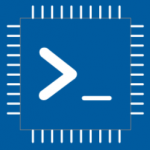Advertisement
Not a member of Pastebin yet?
Sign Up,
it unlocks many cool features!
- /********* Pleasedontcode.com **********
- Pleasedontcode thanks you for automatic code generation! Enjoy your code!
- - Terms and Conditions:
- You have a non-exclusive, revocable, worldwide, royalty-free license
- for personal and commercial use. Attribution is optional; modifications
- are allowed, but you're responsible for code maintenance. We're not
- liable for any loss or damage. For full terms,
- please visit pleasedontcode.com/termsandconditions.
- - Project: Button Webserver
- - Source Code NOT compiled for: ESP32 DevKit V1
- - Source Code created on: 2024-10-07 16:32:39
- ********* Pleasedontcode.com **********/
- /****** SYSTEM REQUIREMENTS *****/
- /****** SYSTEM REQUIREMENT 1 *****/
- /* generate an arduino sketch for an ESP32-C6 and a */
- /* W550 SPI1 connected, which handle a ethernet tcp */
- /* socket server in port 3000 */
- /****** END SYSTEM REQUIREMENTS *****/
- /****** DEFINITION OF LIBRARIES *****/
- #include <EasyButton.h> //https://github.com/evert-arias/EasyButton
- #include <AsyncWebServer_ESP32_SC_W5500.h> //https://github.com/khoih-prog/AsyncWebServer_ESP32_SC_W5500
- #include <ETH.h> // Include Ethernet library for ESP32
- /****** FUNCTION PROTOTYPES *****/
- void setup(void);
- void loop(void);
- /***** DEFINITION OF DIGITAL INPUT PINS *****/
- const uint8_t nose_PushButton_PIN_D4 = 4;
- /****** DEFINITION OF LIBRARIES CLASS INSTANCES*****/
- // Create an instance of EasyButton for the push button
- EasyButton button(nose_PushButton_PIN_D4);
- // Create an instance of AsyncWebServer on port 3000
- AsyncWebServer server(3000);
- /****** FUNCTION PROTOTYPES FOR BUTTON CALLBACKS *****/
- void onButtonPressed(void);
- /****** SETUP FUNCTION *****/
- void setup(void)
- {
- // Initialize serial communication
- Serial.begin(115200);
- // Initialize the button
- button.begin();
- // Attach the callback function to the button press event
- button.onPressed(onButtonPressed);
- // Set the push button pin mode
- pinMode(nose_PushButton_PIN_D4, INPUT_PULLUP);
- // Start the Ethernet connection
- ETH.begin(); // Start Ethernet with default settings
- ETH.config(IPAddress(192, 168, 1, 100), IPAddress(192, 168, 1, 1), IPAddress(255, 255, 255, 0)); // Static IP configuration
- // Start the server and define the root endpoint
- server.on("/", HTTP_GET, [](AsyncWebServerRequest *request){
- request->send(200, "text/plain", "Hello from AsyncWebServer on port 3000!");
- });
- // Start the server
- server.begin();
- }
- /****** LOOP FUNCTION *****/
- void loop(void)
- {
- // Continuously read the button state
- button.read();
- }
- /****** BUTTON CALLBACK FUNCTION *****/
- void onButtonPressed(void)
- {
- Serial.println("Button pressed");
- }
- /* END CODE */
Advertisement
Add Comment
Please, Sign In to add comment
Advertisement

